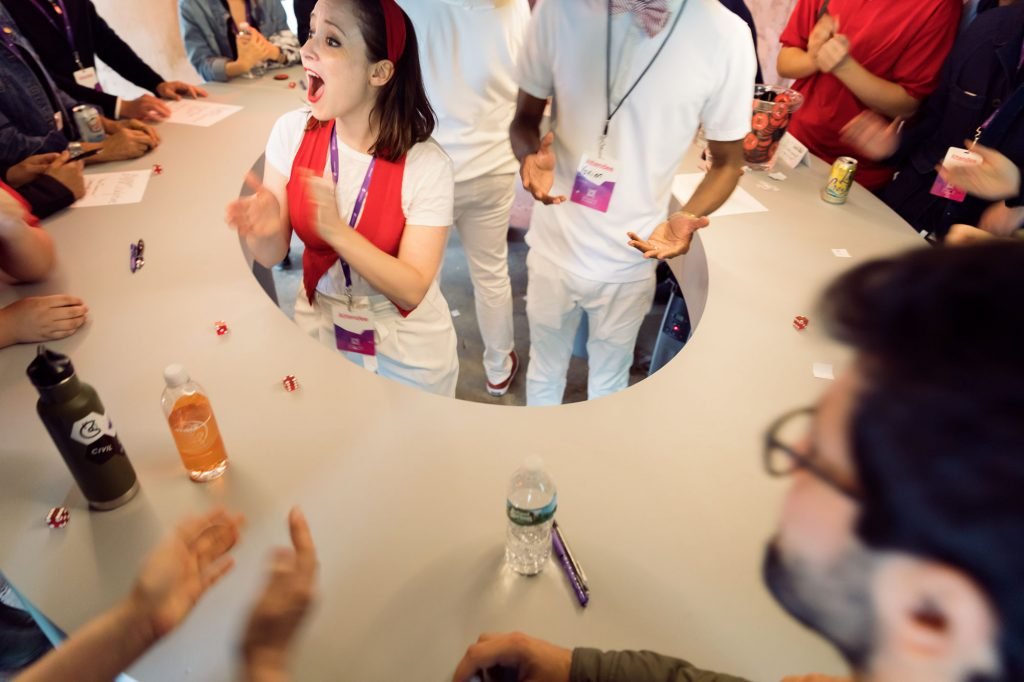
Nash Cash Casino
Ethereal Summit. February, 2018.
The Nash Cash Casino:
An Experiment in Structured Socialization and Value Obfuscation
Grayson Cox, Ron Gierlach, & Brian Gruber
Once attendees have chips, they will notice each one has a QR code on it. The inquisitive attendee will scan the QR code with her phone and see the Ethereum wallet to which it is connected. The vast majority of these wallets will have $1 in them. A few will have much more in them, and attendees will need to decide whether the chips they hold are worth putting at risk by playing games within the table in an attempt to earn more chips, whether they would like to keep the chips in their current form and not play, or whether they would like to destroy the chips and extract the value (more on this in the technical section).
If an attendee chooses to keep the chips (in tact or otherwise), those chips will be removed from the collection of chips, and there will be fewer chips in play for others.
If an attendee decides to risk her chips, she will be able to enter the table and begin playing game theory games with the dealers. These games will include:
The Pirate Game (5 players) - Hierarchy of pirates decides how to split booty
Kuhn Poker (2 players) - Poker with three cards. To bet or not to bet?
Matching Pennies (2 players) - Nash equilibrium mixed strategy. Odd/Even, Same/Different. Stay random.
Minority Game (3 or 5 players) - Open communication, lies permitted, binary option. Minority wins
Volunteer’s Dilemma (5 players) - Someone has to willingly lose
Iterated Prisoner’s Dilemma (2 players) - Most rational choice = worst outcome. Repeat and remember the choices of your partner
Search Game (1 player) - Not played with a dealer, but played within the table. Be observant. Ask the right person the right question. Get chips.
Micatio (Morra) (2 players) - holding out fingers and calling out numbers
Actors will be coached extensively on the rules of the games, how best to enforce them, and on creating a fun and disorienting experience for all attendees.
Concurrent to the games, visitors will be able to browse the prizes and ask to handle them to perform price checks via QR code scanning. The price for these prizes must be high enough to keep 99% of attendees from buying them ($5,000-$10,000 each), the idea being that an attendee could purchase a prize directly and thereby privatize it in real-time to the detriment of other attendees - and that is completely allowed - but most likely the average attendee will not. She will, however, gain a perception of the “inherent” value of the prizes. Knowing that they are also available for, say, 10 chips, should hopefully decrease risk-averse behavior and increase participation in the table games. We’re also interested in the idea of an object being valued at $5,000 and $10 (via the collateralized chips) simultaneously, and what that does to its desirability… particularly because there will be a third, quantifiable, market-driven value contained within the gold plated upon each object. How does one negotiate these three disparate values?
Written by Brian Gruber

























































































